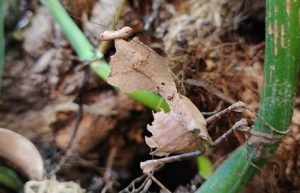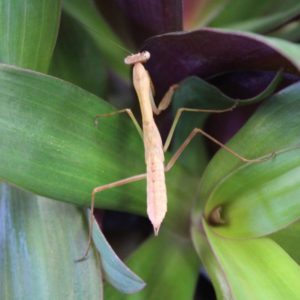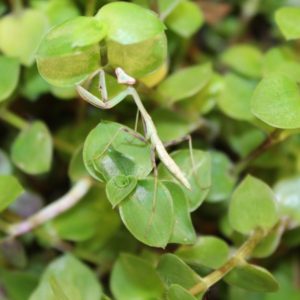Copyright 2021 Evolution Reptiles
All rights reserved.
Copyright 2025 Evolution Reptiles
All rights reserved.
All rights reserved.
Praying mantids are an order of insects that contains 2,400 species – that we know about – and are found in both tropical and temperate countries. They are most closely related to cockroaches and termites, rather than the phasmids (stick insects) which they often closely resemble. A triangular head with compound eyes is distinctive, and they all have excellent eyesight; they can detect movement up to 18 metres away, and have excellent binocular vision.
They vary in size from 1 to 16cm, and they all have one other thing in common – they are all voracious predators. It’s often been remarked that if they were large enough they’d be maneaters! Mostly they are ambush predators, although some of the smaller, ground living species chase down their prey.

But why ‘praying’? It’s the position of the front two legs that gives them this nickname. Technically known as ‘raptorial forelegs’, they are held folded together in front of the insect like the hands of a medieval monk on his way to church. Unlike the monk, those folded arms can be unfolded at a very rapid rate in order to catch whatever creature has had the misfortune to wander past the hungry mantis.
Not just insects, either. The diet of a mantis can include everything from the very tiny – springtails – to the very large – hummingbirds! Everything that moves in between those two extremes can become food for a hungry mantis, from every shape and size of insect to snakes and lizards. Gerald Durrell wrote about a battle he witnessed as a child between a mantis and a gecko above, and finally on, his bed.

They are, of course, also preyed upon by other creatures. They avoid this by the slow, swaying walk that imitates leaves in breeze, and by adopting a startling range of colours and body shapes that imitate twigs, leaves, or flowers. Add to that highly coloured and patterned wings and legs that can be flashed at a predator to startle them, and you have a highly efficient predator that also makes an excellent pet.

There are some general rules for keeping mantids, although each individual species does have its own requirements. In general, they need:
Peacock Mantis, Pseudempusa pinnapavonis
Giant Dead Leaf Mantis, Deroplatys dessicata
Southeast Asian Dead Leaf Mantis, Deroplatys lobata
Jewelled Flower Mantis, Creobroter gemmatus
African Mantis, Sphodromantis gastrica
Egyptian Mantis, Miomantis paykullii
Orchid Mantis, Hymenopus coronatus
Giant Asian Mantis, Hierodula membranacea
Copyright 2021 Evolution Reptiles
All rights reserved.